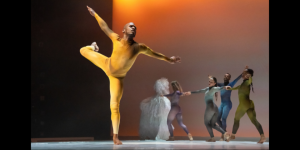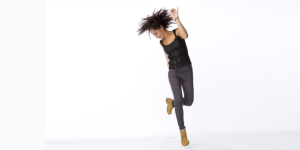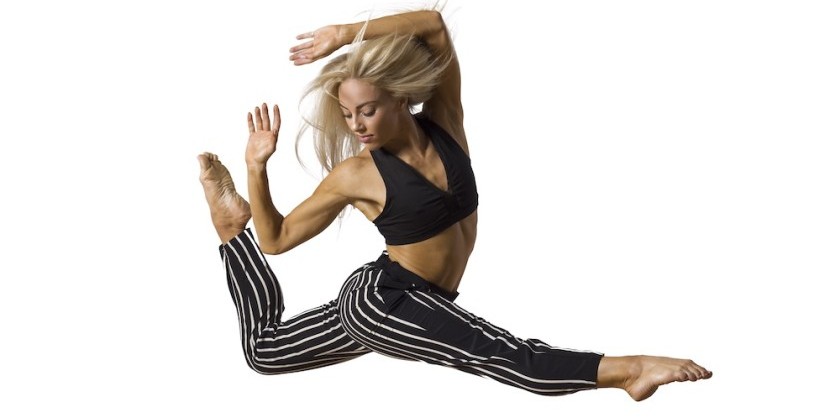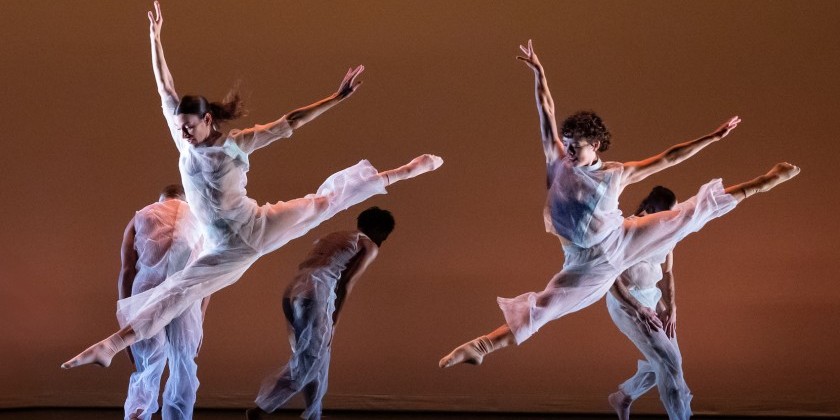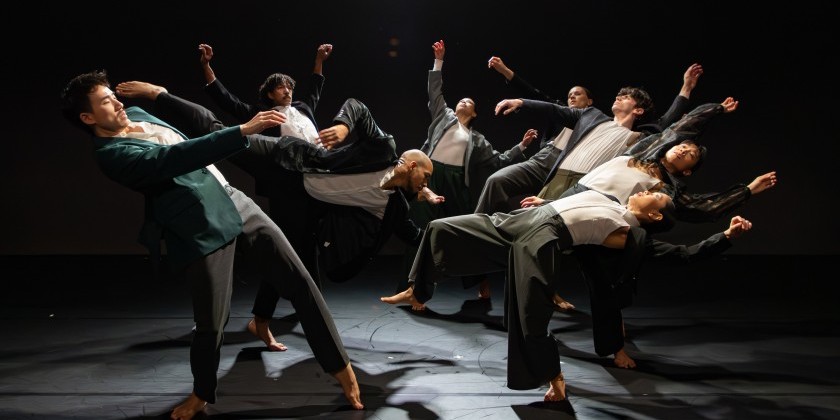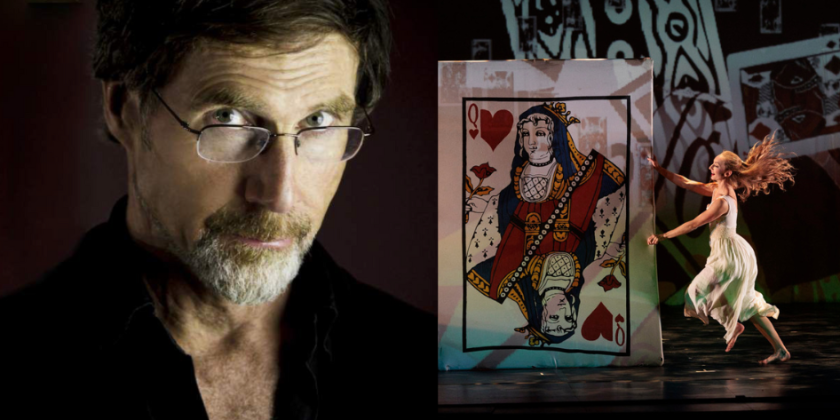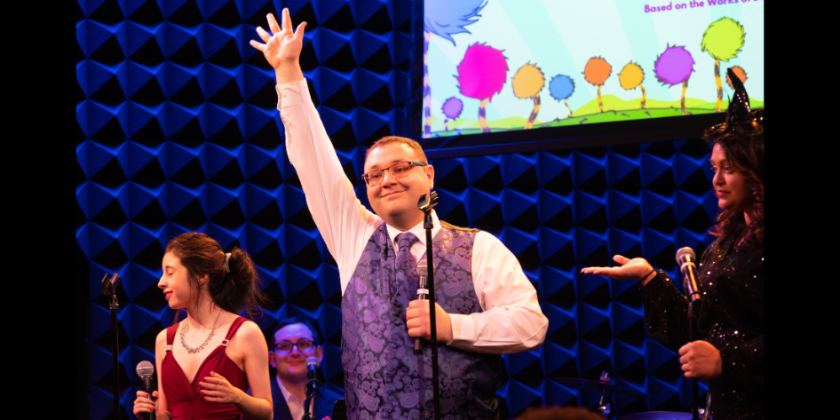IMPRESSIONS: Parsons Dance at The Joyce Theater in Work by David Parsons, Omar Roman De Jesus and Ephrat Asherie
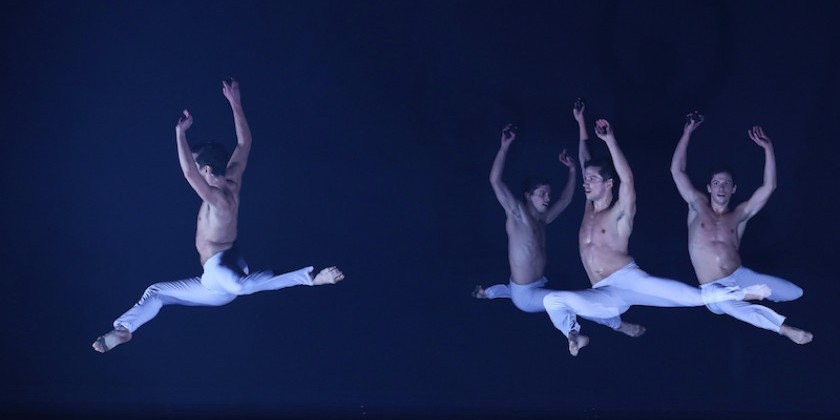
May 17th, 2017, 7pm
Choreography: David Parsons, Ephrat Asherie, Omar Roman De Jesus
Performers: Zoey Anderson, Elena D’Amario, Eoghan Dillon, Geena Pacareu, Omar Roman De Jesus, Deidre Rogan, Ian Spring, Justus Whitfield
Pictured above: Ian Spring in a time-lapsed photo from Caught by David Parsons. Photo by Bill Herbert, 2016.
Since 1985, David Parsons’ internationally renowned company has impressed and delighted audiences with its thematically simple but technically impressive pieces. Parsons uses clever tricks to create thrilling illusions that appeal to dancers and non-dancers alike. The 2017 season at The Joyce Theater charms with a combination of seasoned classics and new explorations.
Parsons founded his company with Tony Award-winning lighting designer Howell Binkley. Light is instrumental to his work as demonstrated by repertoire classics Hand Dance and Caught.
In Caught, the very first dance created by David Parson's in 1982 and a signature work, soloist Ian Spring chases a spotlight around the stage. At times, he moves with effort, as though chained to the earth while, other times, his limbs fly weightlessly away from his torso. As the lights flicker more quickly, Spring is illuminated in moments of elevation: running in slow motion, walking on air, and flying in a circle.
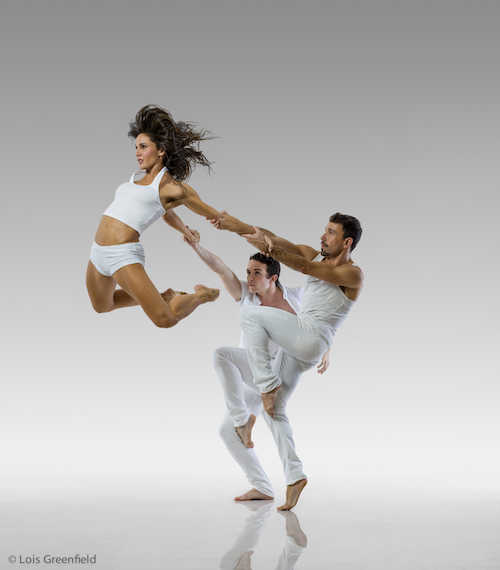
Hand Dance is a clever ditty of fluttering hands, floating in the darkness. They seem unattached to bodies due to a wall of light that passes across the front of the stage. Five pairs wave hello, direct traffic, count on fingers, and do the Macarena. Sometimes, as in shadow puppetry, they form recognizable shapes. They mimic the music, which gets faster and faster before ending suddenly.
In Finding Center, a brief but poignant duet for Ian Spring and Elena D’Amario, intricate partnering gives the illusion of magic. Spring hovers D’Amario, stiff as a board, just above the ground, first face down, then face-up.
Swing Shift, another Parsons classic, flaunts the virtuosity of the company. Kenji Bunch’s luxurious string music and Mia McSwain’s flowing, pale-pink costumes complement linear classical movement. Clean unisons and clever counterpointe juxtapose impressive partnering and luscious adagios. The women wrap themselves around the men, who whirl dizzyingly, gathering momentum as they cross the stage. It’s almost as if the dancers create the music with their bodies, particularly during the mime-like hand gestures, which synchronize with piano notes.
Though aesthetically similar to his boss’ work, company member Omar Roman De Jesus’ Daniel, a world premiere, lends a more sensitive, introspective voice. Daniel was inspired by an interaction De Jesus had while participating in Parsons’ educational initiative for dancers on the Autism spectrum.
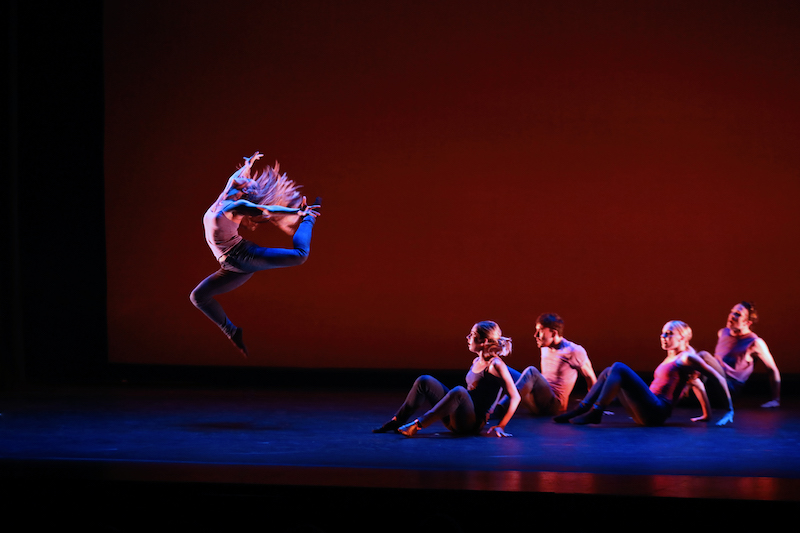
Gendered ambiguously in neutral costumes, the dancers employ tender moments that contrast with the entirety of the program. In one, a man sits cross-legged in the spotlight, performing gestures that mimic every-day actions: eating with utensils, counting something on his fingers. As though frustrated by his inability to perform basic operations, his motions become increasingly frantic. In another, a gentle duet between two males, one holds a deep second-position plié, the other sits comfortably, almost childlike, on his thigh. The final image — two men running in unison around the stage — represents the endearing nature of companionship.
UpEnd, also a world premiere, features a commissioned score by Marty Beller of They Might Be Giants fame. A collaboration between Parsons and esteemed breakdancer Ephrat Asherie, the piece manifests both voices clearly. Parsons’ clean, contemporary sensibility blends easily with Asherie’s athletic rhythms. The dancers are clad in sassy, multi-colored tops, which lends a kaleidoscopic feeling.
Quick poppy sections contrast with a slow, sexy ones. Urban “dance off” moments showcase the dancers engaging in friendly competition, sometimes one on one, sometimes men against women. The genuine energy and enthusiasm of the dancers makes UpEnd fun to watch.
In general, the evening is fun to watch. Parsons’ reach over such a wide audience is understandable. His choreography is like great pop music. While not always challenging, it’s definitely catchy and keeps us wanting more.
The Dance Enthusiast Shares IMPRESSIONS / our brand of review and Creates Conversation.
Check out our other IMPRESSIONS here.
Share your #AudienceReview of this show or others for a chance to win a prize.




